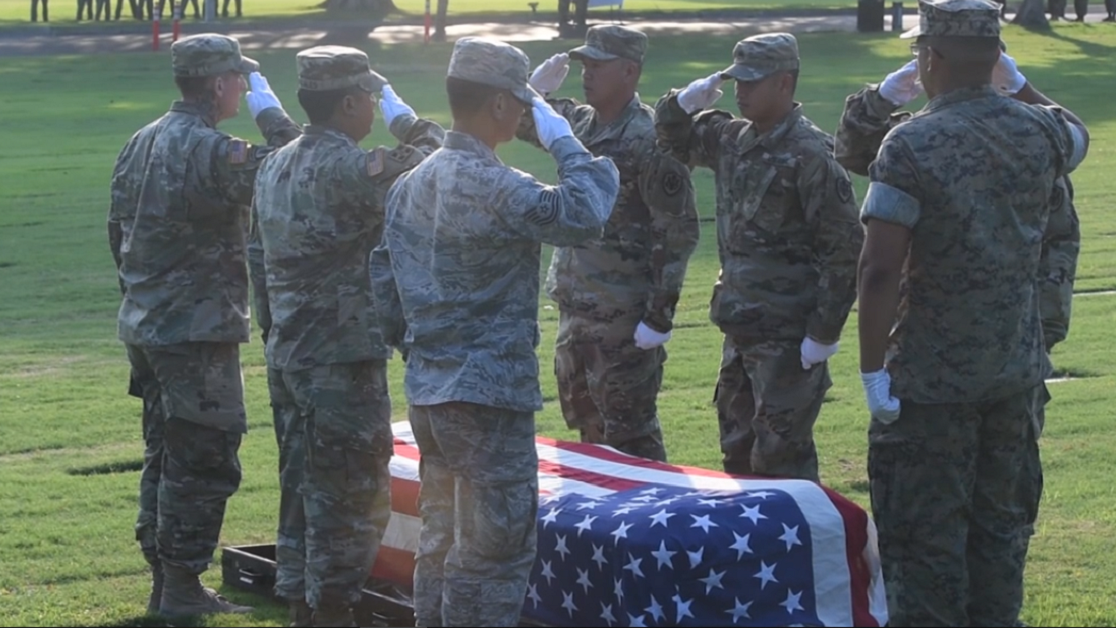Why the US just moved the remains of fallen WWII soldiers

SUMMARY
When American servicemen fall and are buried, it's generally assumed that their resting place will be their last. Whether it's a troop who was killed in World War I and buried in an American cemetery in France or a hero brought to rest at Arlington National Cemetery, the honored dead are not to be disturbed. However, some of these fallen heroes, whose identities were once unknown, are being disinterred.
One such ceremony took place in mid-July, 2018, at the National Memorial Cemetery of the Pacific near Honolulu, Hawaii. This cemetery, also known as the Punchbowl, is where thousands of servicemen who fell during operations in the Pacific Theater of World War II and the Korean War have been buried (some prominent civilians and non-KIAs are also buried there).
The reason for disturbing this rest is a damn good one, though.
The Defense POW/MIA Accounting Agency believes it may be able to identify some of those fallen personnel and finally provide closure for their families. This has been done several times before, and a number of fallen personnel have been identified over the years as a result.
U.S. service members with the Defense POW/MIA Accounting Agency (DPAA) conduct a disinterment ceremony at the National Memorial Cemetery of the Pacific.
(U.S. Army photo by Sgt. Devone Collins)
Perhaps the most high-profile disinterment for the purpose of identifying a fallen serviceman was of the Unknown Soldier of the Vietnam War, who had been interred at the Tomb of the Unknown Soldier in 1984. In 1998, evidence pointing to the identity of that soldier resulted in the decision to disturb the Tomb of the Unknown Soldier to conduct DNA testing.
In 1998, the Department of Defense disinterred the Unknown Soldier of the Vietnam War to conduct DNA tests to determine his identity,
(DOD)
The tests eventually led to identifying the remains asthose of Air Force First Lieutenant Michael Blassie, killed in action when his A-37 Dragonfly was shot down. Blassie's remains were turned over to his family and he was buried in the Jefferson Barracks National Cemetery. You can see the July 2018 disinterment at the National Memorial Cemetery of the Pacific in the video below.
SHARE
